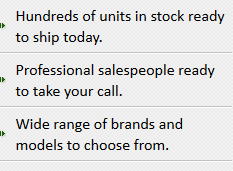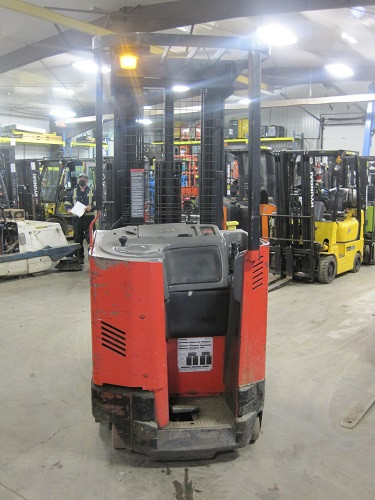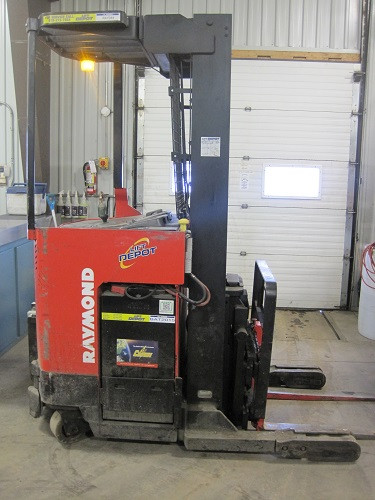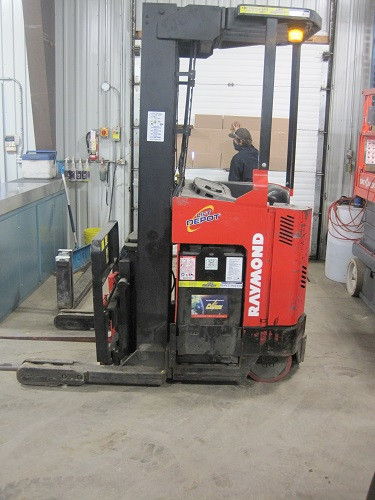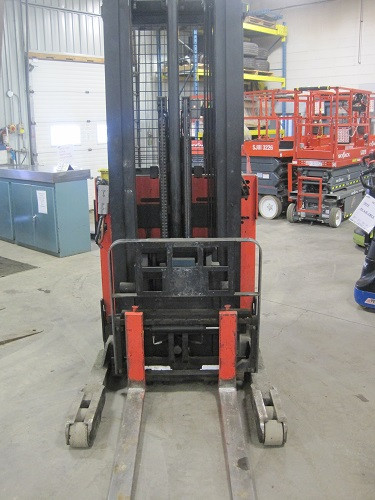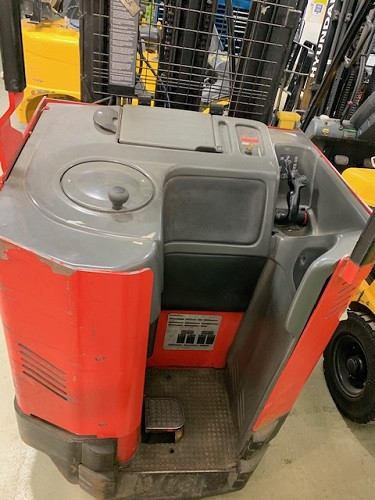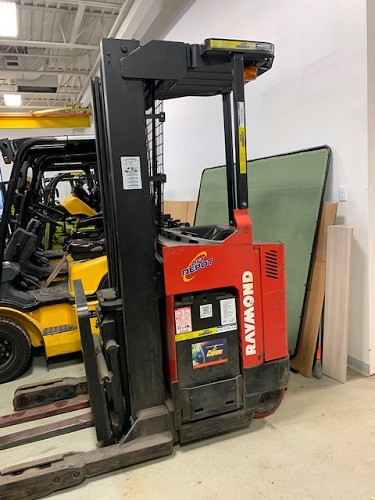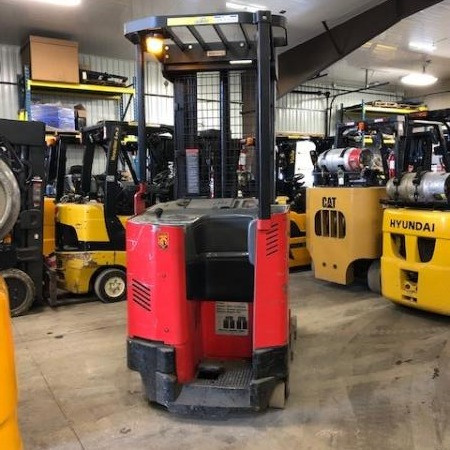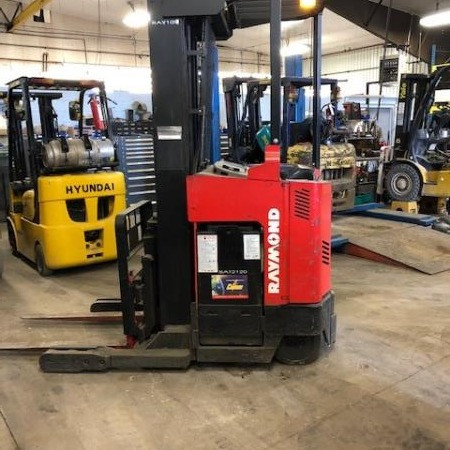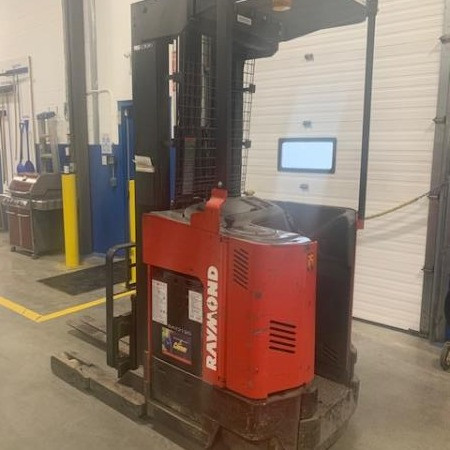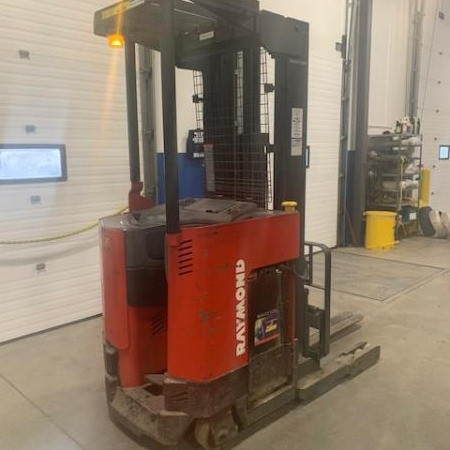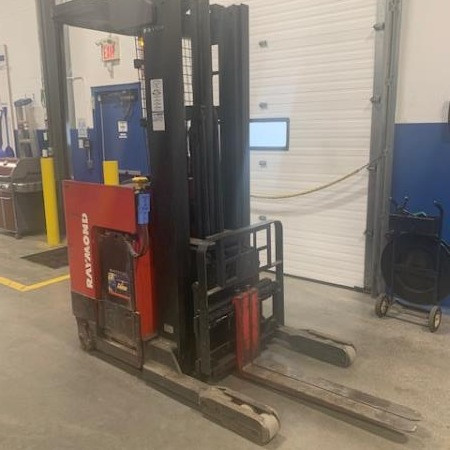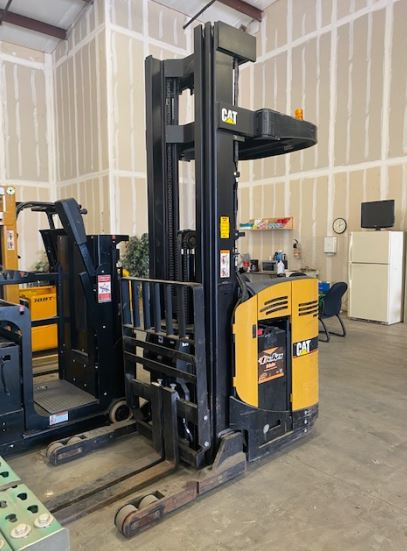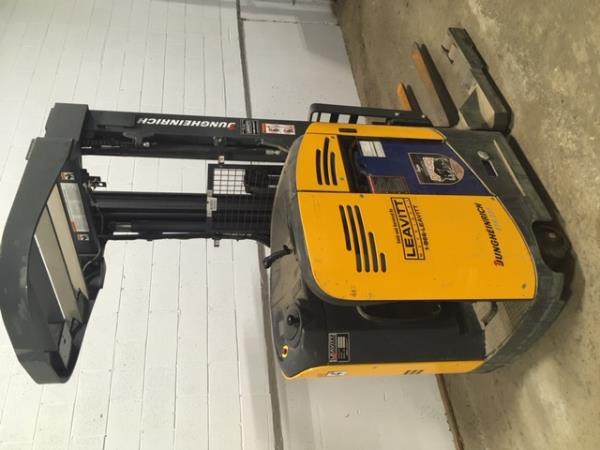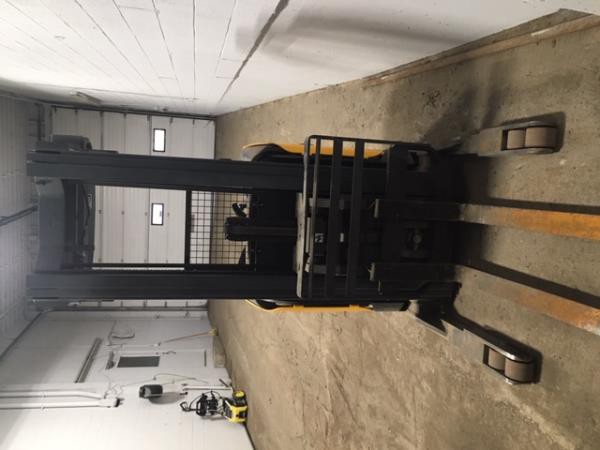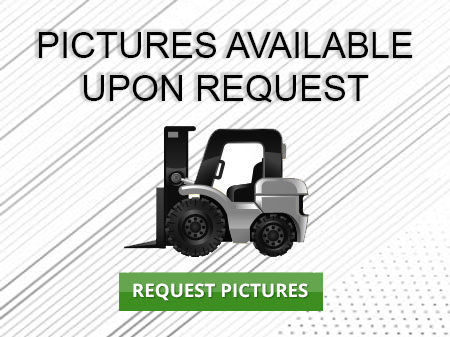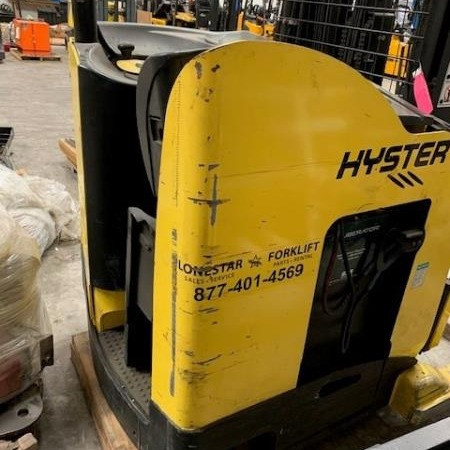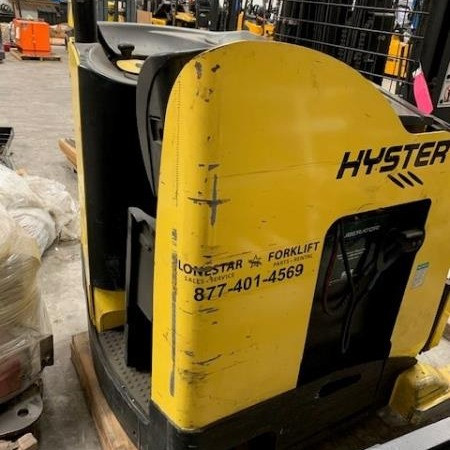Narrow Aisle Forklift Garden Grove
Used Narrow Aisle Forklift Garden Grove - Storage and shipping across the globe have been drastically updated since forklifts came onto the scene. First created at the beginning of the twentieth century, they are commonly seen and utilized through a variety of industries. To ensure complete safety, models are rated with specific load maximums. Specific forward center of gravity recommendations is found on the nameplate for extra safety. It is illegal to remove the nameplate without permission from the manufacturer. The nameplate is visible and located for easy reference.
Thanks to rear-wheel steering, forklifts can work easily in tight corners. While steering a forklift, there is no caster action. To ensure a constant turning state, it isn’t required to apply steering force. Forklifts can become very unstable if their load is not adequately secured. To maintain safety, the machine and the cargo need to be thought of as a combined unit with a varying center of gravity. It is imperative the operator does not have a raised load and negotiate a turn at speed. A dangerous tip over instance can occur when gravitational and centrifugal forces are combined. Strict forklift load limits need to remain consistent for safety. The forks load limit becomes decreased with elevation. An additional safety measure is the loading reference plate located on the forklift. It is not recommended to lift personnel without proper safety gear.
Forklifts are popular machines in warehouses and distribution centers. Certain job sites have drive-in/drive-thru racking that allows the forklift to travel into a bay to deposit or retrieve a pallet. Guide rails are often on the floor to guide drivers inside of the bay. Pallets are located on rails or cantilevered arms with operators familiar with the system. Compared to other storage locations, there is a greater chance for damage since each pallet needs to enter and exit the storage facility. The buildings that rely on forklifts need to facilitate safe and efficient movement. Fork truck dimensions including mast width and overall width need to be taken into consideration very carefully during the design.
The hydraulics are a central component. They either controlled with levers to manipulate hydraulic valves directly or with actuators that are electrically controlled with smaller levers. Many ergonomically designed forklifts are available. Available in numerous load capacities and variations, there is a model to suit every application. The majority of forklifts in typical warehouse locations have load capacities ranging between 1 and 5 tons. There are larger units with 50 tons of lifting capacity that are used for loading shipping containers and lifting tremendous loads.
Construction sites are common places to view forklifts. This equipment is utilized for carrying heavy items over difficult terrain for long distances. These industrial machines combine vehicle capacity and lifting ability. Forklifts are used for unloading pallets of construction materials, tools, bricks, steel beams and items from a delivery truck and depositing them where required. Most shipping operations rely on truck-mounted units for offloading construction items.
Warehouse applications are popular for forklifts to load and unload goods. Many different forklift units are on the market ranging from driver-operated units to pedestrian-operated machines. Forklift operators use side-shifters to move loads and tilt the mast, along with precision raising and lowering of the forks to ensure the load remains stable and doesn’t slide off of the forks.
Forklifts are popular at recycling plants for emptying containers and recycling trucks and transporting items to certain locations. Machines can unload and load railway cars, tractor-trailers, straight trucks and elevators. Cage attachments are helpful for moving parts including tires that may slide off of the forks.
Preparing the work area is an important step prior to beginning the loading or unloading. Fixed jacks help to support the semi-trailer that is not hooked up to a tractor in order to prevent the unit from overturning. Pay attention to ensure that the vehicle entry door’s height clears the forklift height by a minimum of five centimeters. The docks should be dry and free of blockages along with the dock plates. While traveling empty, the forks need to be pointed downward and when traveling with a load they are kept pointing up.
The Counterbalance forklift is the most popular kind. This model has forks at the front of the machine. It has been designed with a weight located in the back with the purpose to counter or offset the balance of the front load. This lift truck is easy to operate as it has no extended arms, enabling drivers to ride up the racking or the load. This forklift comes in diesel, propane or electric variations.
A Reach forklift is popular for warehouse applications. This model is suited mainly for interior applications. The Reach forklift can extend past the machine and use its’ stabilizing forks and legs to access the racking and delivering height that the majority of forklifts cannot reach. The legs support the machine and this design makes it unnecessary to rely on weight for counterbalancing the forklift. Another type of forklift is the Double Reach. The Double Reach models rely on extended forks that can reach twice as deep as regular forks and have the ability to grab dual pallets from the same racks.
An Electric Pallet Truck is also known as a Walkie. These machines are made to allow the operator to safely walk behind the pallet truck. This type of machine can lift heavy pallets and function well within confined spaces. It is capable of transporting pallets efficiently and easily. This machine can travel backward or forward thanks to a hand throttle. Additionally, this machine can stop quickly which is beneficial. There are a variety of walkie models and certain ones have a platform to safely accommodate the operator. Double Walkie trucks showcase extended forks to enable the operators the ability to maximize two pallets simultaneously.
Narrow Aisle Forklift PDF
Stock Number: DP-RAY045 GL
Make: RAYMOND
Model: EASI R40TT
Year: 2005
| Stock Number |
DP-RAY045 GL |
| Make |
RAYMOND |
| Model |
EASI R40TT |
| Year |
2005 |
| Category |
Narrow Aisle Forklift |
Stock Number: DP-RAY109 GL
Make: RAYMOND
Model: EASI R40TT
Year: 2006
| Stock Number |
DP-RAY109 GL |
| Make |
RAYMOND |
| Model |
EASI R40TT |
| Year |
2006 |
| Category |
Narrow Aisle Forklift |
Stock Number: LS13774 GL
Make: CAT
Model: NR3000
Year: 2006
| Stock Number |
LS13774 GL |
| Make |
CAT |
| Model |
NR3000 |
| Year |
2006 |
| Category |
Narrow Aisle Forklift |
Stock Number: 207131 GL
Make: Jungheinrich
Model: ETR 235
Year: 2013
| Stock Number |
207131 GL |
| Make |
Jungheinrich |
| Model |
ETR 235 |
| Year |
2013 |
| Category |
Narrow Aisle Forklift |
Stock Number: DP-CLK380 GL
Make: CLARK
Model: NPX20
Year: 2018
| Stock Number |
DP-CLK380 GL |
| Make |
CLARK |
| Model |
NPX20 |
| Year |
2018 |
| Category |
Narrow Aisle Forklift |
Stock Number: DP-CLK171 GL
Make: CLARK
Model: NPX20
Year: 2016
| Stock Number |
DP-CLK171 GL |
| Make |
CLARK |
| Model |
NPX20 |
| Year |
2016 |
| Category |
Narrow Aisle Forklift |
Stock Number: LS15309 GL
Make: YALE
Model: OS030ECN
| Stock Number |
LS15309 GL |
| Make |
YALE |
| Model |
OS030ECN |
| Category |
Narrow Aisle Forklift |
Stock Number: LS14253 GL
Make: HYSTER
Model: N40ZRS
Year: 2013
| Stock Number |
LS14253 GL |
| Make |
HYSTER |
| Model |
N40ZRS |
| Year |
2013 |
| Category |
Narrow Aisle Forklift |
Stock Number: LS14767 GL
Make: RAYMOND
Model: 60-C40TT
Year: 94
| Stock Number |
LS14767 GL |
| Make |
RAYMOND |
| Model |
60-C40TT |
| Year |
94 |
| Category |
Narrow Aisle Forklift |
